
Nazca Booby, Sula granti, Punta Suarez; Hood Island; Espanola Island; Galapagos Islands; Galapagos; Ecuador. Flying. Ocean waves on Hood Island or Espanola Island, Galapagos Islands, Ecuador. Galapagos Islands National Park. Nazca booby flying.
Browse 480+ waved albatross stock photos and images available, or search for reed kaestner or marine iguana to find more great stock photos and pictures.

Nazca Booby, Sula granti, Punta Suarez; Hood Island; Espanola Island; Galapagos Islands; Galapagos; Ecuador. Flying. Ocean waves on Hood Island or Espanola Island, Galapagos Islands, Ecuador. Galapagos Islands National Park. Nazca booby flying.

Waved Albatross in flight in the Galapagos
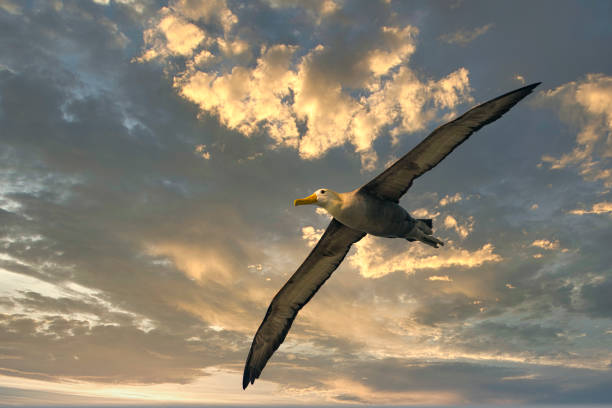
A waved albatross (Phoebastria irrorata), also known as Galapagos albatross flying over Espanola island, one of the Galapagos Islands in the Pacific Ocean. The species is endemic to the Galpagos islands. Wildlife shot.

Dramatic sea cliffs on Espanola Island, Galapagos Islands.
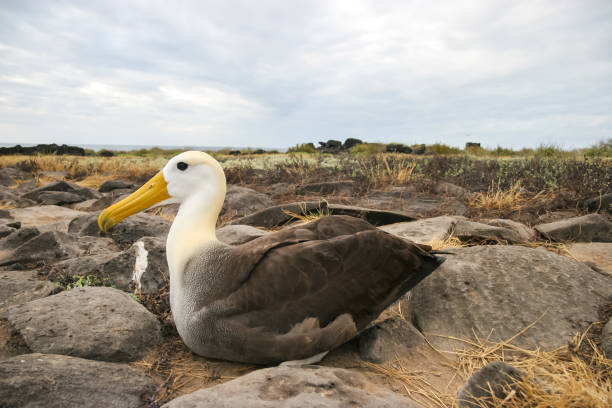
With close to the biggest wing span of all birds, and certainly sea birds. This albatross rests on it's clutch of eegs on a rocky shore in the Galapagos Islands

Mated Pair of Alabatros on Espanola Island, Galapagos Islands, Ecuador

Galapagos Waved Albatross (Phoebastria irrorata) flying, Espanola Island, Galapagos national park, Ecuador.

Waved albatross sitting near chick, Galapagos Islands

Waved Albatross (Phoebastria irrorata) chick feeding from parent on Espanola on the Galapagos Islands

Espanola, Galapagos, Ecuador - 18th July, 2005: A group of eco-tourists visiting the endemic Waved Albatross - Phoebastria irrorata - colony on Espanola Island, Galapagos. The white-painted markers show the boundaries within which visitors must stay. The wildlife can wander anywhere!
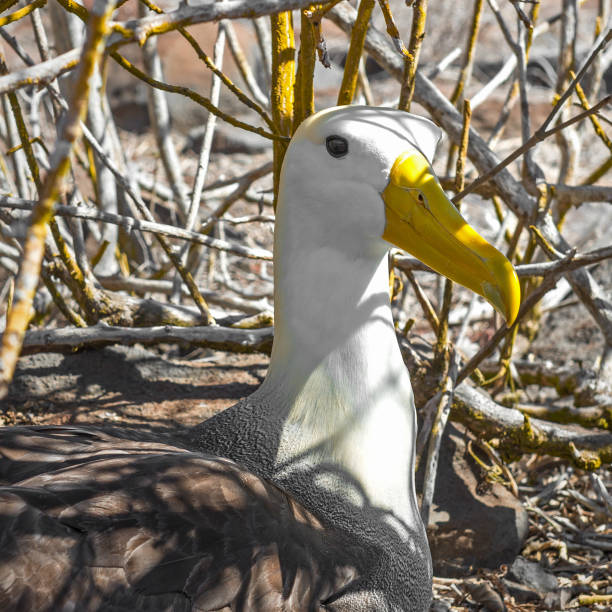
Portrait of a waved albatross (Phoebastria irrorata) on Espanola Island, Galapagos Islands National Park, Ecuador. Espanola island is the only place on earth where the waved albatross can be found.

"A Waved Albatross (Phoebastria irrorata) flying over Espanola, The Galapagos, Ecuador"

An albatross spreads its large wings on Espanola Island to the Galapagos Islands

A Galapagos Albatross taking it all in after his landing. Also nicknamed Gooney Birds due to their spectacularly clumsy take offs and landings due in part to those huge feet. Excellent videos of those ‘clumsy’ take-offs and landings on line.

Galapagos Waved albatross in the wild. Galapagos Islands. Republic of Ecuador.

A clipped seabird the Waved Albatross Phoebastria irrorata on an isolated white background
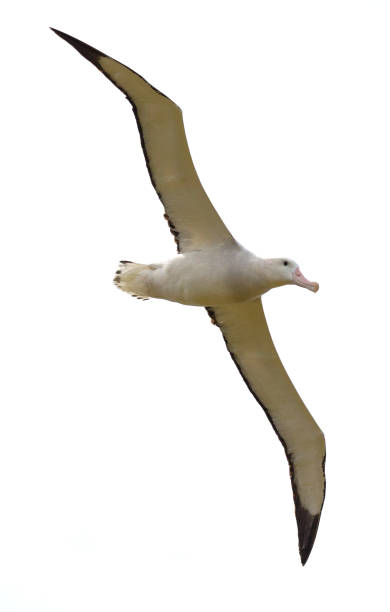
A clipped seabird the Waved Albatross Phoebastria irrorata on an isolated white background

Taken of an Albatros in the Galapagos

The Waved Albatross (Phoebastria irrorata), also known as the Galapagos Albatross is a large seabird known for its 7-8 foot wingspan and "wave-like" pattern on its breast. These two birds are taking a break from their ritualized mating dance that involves bowing, bill circling, swaying, honking, bill clicking and whistling. This species is critically endangered because it has an extremely small breeding range, essentially contfined to one island. Photo was taken at Punta Suarez on Espanola Island, Galapagos
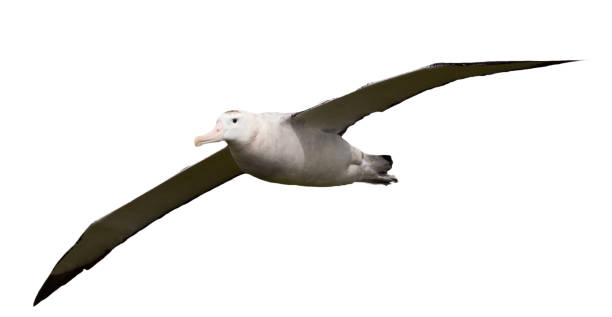
A clipped seabird the Waved Albatross Phoebastria irrorata on an isolated white background

Waved albatross Diomedea irrorata in Galapagos

Waved albatross in full wing spread flying above Espanola island in Suarez Point.

Galapagos Waved albatross in the wild. Galapagos Islands. Republic of Ecuador.

Waved Albatross (Phoebastria irrorata) taking off from Espanola Island (Galapagos Islands, Ecuador)

Waved albatross flying showing its large wingspan.

Waved Albatross, Galapagos Albatross , Phoebastrria irrorata, Galapagos National Park, Galapagos Islands, UNESCO World Heritage Site, Ecuador, America

Albatross nesting on the island of Espanola, Galapagos Islands, Ecuador.

Critically Endangered Waved Albatross nesting on Espanola Island in the Galapagos

Waved Albatross (Phoebastria irrorata) chick on the nest on Espanola on the Galapagos Islands

With close to the biggest wing span of all birds, and certainly sea birds. This albatross rests on it's clutch of eegs on a rocky shore in the Galapagos Islands

Galapagos Animals. Galapagos Albatross aka Waved albatrosses on Espanola Island, Galapagos Islands, Ecuador. The Waved Albatross is an critically endangered species endemic to Galapagos.

The waved albatross (Phoebastria irrorata), also known as Galapagos albatross, is the only member of the family Diomedeidae located in the tropics. When they forage, they follow a straight path to a single site off the coast of Peru, about 1,000 km (620 mi) to the east. During the non-breeding season, these birds reside primarily on the Ecuadorian and Peruvian coasts.

The waved albatross (Phoebastria irrorata), also known as Galapagos albatross, is the only member of the family Diomedeidae located in the tropics. When they forage, they follow a straight path to a single site off the coast of Peru, about 1,000 km (620 mi) to the east. During the non-breeding season, these birds reside primarily on the Ecuadorian and Peruvian coasts.

The waved albatross (Phoebastria irrorata), also known as Galapagos albatross, is the only member of the family Diomedeidae located in the tropics. When they forage, they follow a straight path to a single site off the coast of Peru, about 1,000 km (620 mi) to the east. During the non-breeding season, these birds reside primarily on the Ecuadorian and Peruvian coasts.

A female waved albatross sits in ground cover facing away from the sun on Espanola Island, Galapagos, Ecuador.

A female waved albatross (Galapagos albatross) rests among rocks and low growth on Espanola Island, Galapagos,Ecuador

South America, Ecuador, Galapagos, Espanola Island, Punta Suarez:- photographed on the Island Espanola in the afternoon

South America, Ecuador, Galapagos, Espanola Island, Punta Suarez:- photographed on the Island Espanola in the afternoon

South America, Ecuador, Galapagos, Espanola Island, Punta Suarez:- photographed on the Island Espanola in the afternoon

South America, Ecuador, Galapagos, Espanola Island, Punta Suarez:- photographed on the Island Espanola in the afternoon

The waved albatross (Phoebastria irrorata), also known as Galapagos albatross, is the only member of the family Diomedeidae located in the tropics. When they forage, they follow a straight path to a single site off the coast of Peru, about 1,000 km (620 mi) to the east. During the non-breeding season, these birds reside primarily on the Ecuadorian and Peruvian coasts.

South America, Ecuador, Galapagos, Espanola Island, Punta Suarez:- photographed on the Island Espanola in the afternoon

A female waved albatross rests among colorful ground cover on Espanola Island, Galapagos, Ecuador.
© 2025 iStockphoto LP. The iStock design is a trademark of iStockphoto LP. Browse millions of high-quality stock photos, illustrations, and videos.
Do Not Sell or Share